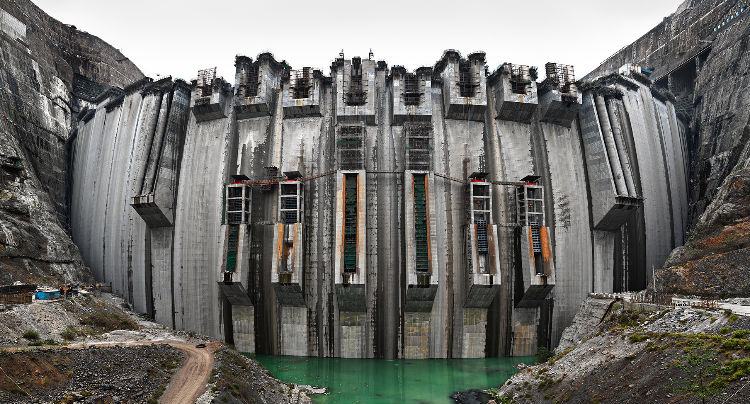
Visually breathtaking, structurally amorphous.

Visually breathtaking, structurally amorphous.
Filmmakers Jennifer Baichwal and Edward Burtynsky (Manufactured Landscapes) bottle the immense power and omnipresence of water, earth’s mightiest element, in their stunningly cinematic film Watermark. Assembling jaw-dropping footage of rivers, dams, rice paddies, abalone farms, and more, they’ve created a visual feast, instilling a sense of utter smallness in the presence of the godlike blue bodies while also exploring the inextricable link between water and humanity. The film is perhaps to free-flowing, as the sequencing of these natural portraits feels too amorphous to get swept up in after you’ve left the theater, but boy is this film something to behold.
Cinematographer Nicholas de Pencier collaborates with the co-directors to craft the film’s immersive imagery. It’s a staggering experience watching water crush, shape, and feed the earth in glorious 5K detail. Burtynsky, a professional photographer, has a patient eye. Many shots in the film are crawling and uncut to allow us to absorb the grandeur. The sound design is equally paramount. In the film’s opening shot, in which raging, towering plumes of brown water pouring from holes in China’s Xiaolangdi Dam fill the screen, the near-deafening roar of the violent crashes rattles the bones and is frankly frightening. Following this shot we see cracked, bone-dry soil where the Colorado River used to flow through Mexico, a striking juxtaposition that illustrates the complex, potentially disastrous relationship between water and man.

Baichwal and Burtynsky explore how we as humans manipulate and harness water. We’re shown views of the construction of another dam in China, the gargantuan Xiluodu, whose size makes the construction workers look like baby ants. (The 5K resolution works wonders here, as the workers look like tiny people and not moving dots of color, underlining just how massive the dam is.) Later, we see an aerial shot of California’s Imperial Valley, an agricultural oasis surrounded by miles of dusty desert whose water supply used to feed the Mexican barrens we see earlier. Even more disturbing is footage of a tannery in Bangladesh where the chemicals used to tan hides is dumped into the water system, making it look like runny, toxic tar.
Fascinating are the segments in which the filmmakers highlight human ingenuity, like the construction of the Xiluodu, a small piece about the fountains at Las Vegas’ Bellagio hotel, and footage of an ice laboratory in Greenland where scientists research ice cores by drilling mile-deep holes. The Chand Baori in Rajasthan, India is perhaps the most visually arresting and ingeniously designed, a stepwell in the shape of an inverted pyramid lined with countless walkways and stairs that allow residents to fill their buckets no matter what the water level.

Closing out the film is an extended, gorgeous, soaring aerial shot of the Stikine River in British Colombia. Images like these are abundant in Watermark, but the reasoning behind their presentation is elusive beyond their ostensible aesthetic stimulation. There seems to be a message of conservation laced in Baichwal and Burtynsky’s epic collage, but it isn’t graspable enough to elicit deep thought. But still, the majesty of it all is worth the price of admission alone.